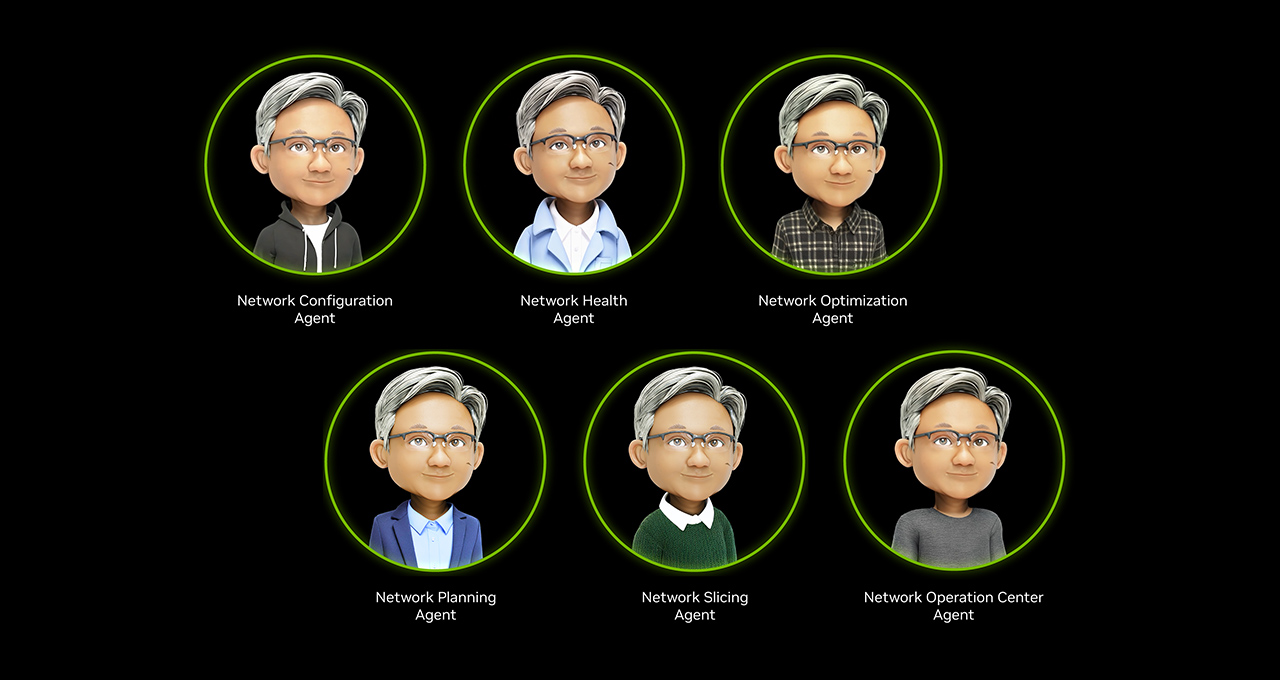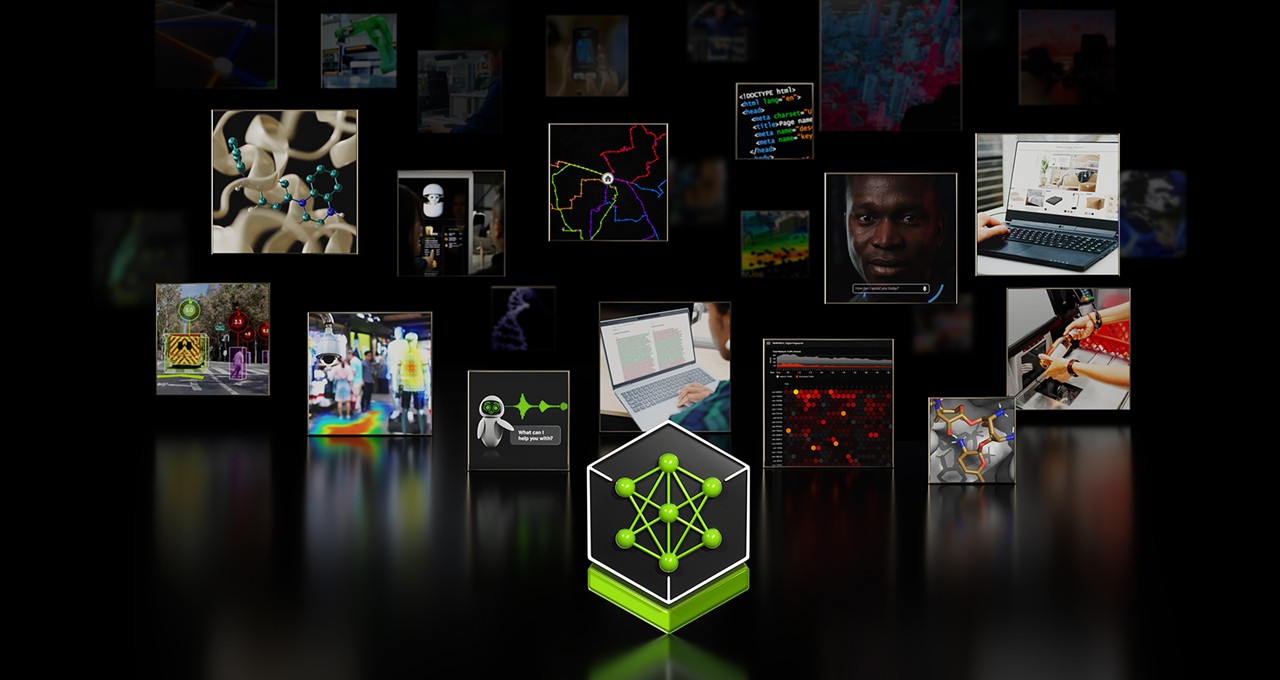
Global telecommunications networks can support millions of user connections per day, generating more than 3,800 terabytes of data per minute on average.
That massive, continuous flow of data generated by base stations, routers, switches and data centers — including network traffic information, performance metrics, configuration and topology — is unstructured and complex. Not surprisingly, traditional automation tools have often fallen short on handling massive, real-time workloads involving such data.
To help address this challenge, NVIDIA today announced at the GTC global AI conference that its partners are developing new large telco models (LTMs) and AI agents custom-built for the telco industry using NVIDIA NIM and NeMo microservices within the NVIDIA AI Enterprise software platform. These LTMs and AI agents enable the next generation of AI in network operations.
LTMs — customized, multimodal large language models (LLMs) trained specifically on telco network data — are core elements in the development of network AI agents, which automate complex decision-making workflows, improve operational efficiency, boost employee productivity and enhance network performance.
SoftBank and Tech Mahindra have built new LTMs and AI agents, while Amdocs, BubbleRAN and ServiceNow, are dialing up their network operations and optimization with new AI agents, all using NVIDIA AI Enterprise.
It’s important work at a time when 40% of respondents in a recent NVIDIA-run telecom survey noted they’re deploying AI into their network planning and operations.
LTMs Understand the Language of Networks
Just as LLMs understand and generate human language, and NVIDIA BioNeMo NIM microservices understand the language of biological data for drug discovery, LTMs now enable AI agents to master the language of telecom networks.
The new partner-developed LTMs powered by NVIDIA AI Enterprise are:
- Specialized in network intelligence — the LTMs can understand real-time network events, predict failures and automate resolutions.
- Optimized for telco workloads — tapping into NVIDIA NIM microservices, the LTMs are optimized for efficiency, accuracy and low latency.
- Suited for continuous learning and adaptation — with post-training scalability, the LTMs can use NVIDIA NeMo to learn from new events, alerts and anomalies to enhance future performance.
NVIDIA AI Enterprise provides additional tools and blueprints to build AI agents that simplify network operations and deliver cost savings and operational efficiency, while improving network key performance indicators (KPIs), such as:
- Reduced downtime — AI agents can predict failures before they happen, delivering network resilience.
- Improved customer experiences — AI-driven optimizations lead to faster networks, fewer outages and seamless connectivity.
- Enhanced security — as it continuously scans for threats, AI can help mitigate cyber risks in real time.
Industry Leaders Launch LTMs and AI Agents
Leading companies across telecommunications are using NVIDIA AI Enterprise to advance their latest technologies.
SoftBank has developed a new LTM based on a large-scale LLM base model, trained on its own network data. Initially focused on network configuration, the model — which is available as an NVIDIA NIM microservice — can automatically reconfigure the network to adapt to changes in network traffic, including during mass events at stadiums and other venues. SoftBank is also introducing network agent blueprints to help accelerate AI adoption across telco operations.
Tech Mahindra has developed an LTM with the NVIDIA agentic AI tools to help address critical network operations. Tapping into this LTM, the company’s Adaptive Network Insights Studio provides a 360-degree view of network issues, generating automated reports at various levels of detail to inform and assist IT teams, network engineers and company executives.
In addition, Tech Mahindra’s Proactive Network Anomaly Resolution Hub is powered by the LTM to automatically resolve a significant portion of its network events, lightening engineers’ workloads and enhancing their productivity.
Amdocs’ Network Assurance Agent, powered by amAIz Agents, automates repetitive tasks such as fault prediction. It also conducts impact analysis and prevention methods for network issues, providing step-by-step guidance on resolving any problems that occur. Plus, the company’s Network Deployment Agent simplifies open radio access network (RAN) adoption by automating integration, deployment tasks and interoperability testing, and providing insights to network engineers.
BubbleRAN is developing an autonomous multi-agent RAN intelligence platform on a cloud-native infrastructure, where LTMs can observe the network state, configuration, availability and KPIs to facilitate monitoring and troubleshooting. The platform also automates the process of network reconfiguration and policy enforcement through a high-level set of action tools. The company’s AI agents satisfy user needs by tapping into advanced retrieval-augmented generation pipelines and telco-specific application programming interfaces, answering real-time, 5G deployment-specific questions.
ServiceNow’s AI agents in telecom — built with NVIDIA AI Enterprise on NVIDIA DGX Cloud — drive productivity by generating resolution playbooks and predicting potential network disruptions before they occur. This helps communications service providers reduce resolution time and improve customer satisfaction. The new, ready-to-use AI agents also analyze network incidents, identifying root causes of disruptions so they can be resolved faster and avoided in the future.
Learn more about the latest agentic AI advancements at NVIDIA GTC, running through Friday, March 21, in San Jose, California.
Blog Article: Here



